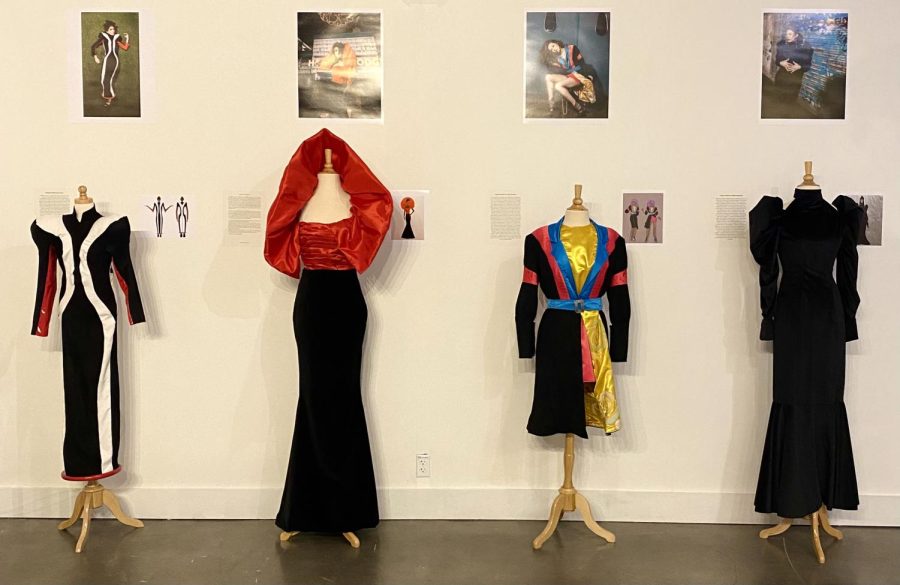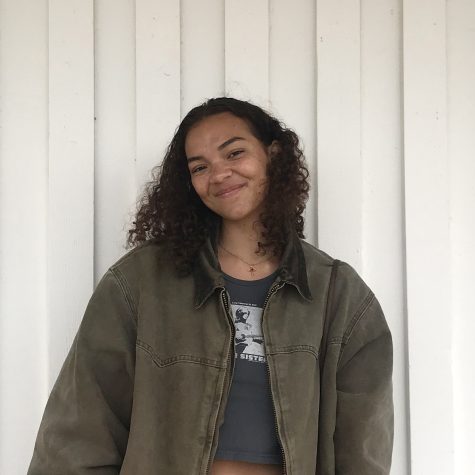Ahh, the 1980s: A decade full of fashion trends that some can’t help but cringe at the thought of. Unlike others, San Diego Mesa College fashion program students embraced the decade that is notorious for its bold clothing. After studying the era in its entirety, the fashion program students got to work.
On April 20, Mesa College fashion program students participated in Fashion Redux, the annual design competition held at the San Diego History Center. It was the first time that the event was held in-person since COVID-19. Attendees were thrilled to have the opportunity to hear directly from the designers, ask questions during the Q&A panel, and view the garments up-close and on models as it brought the event to life.
This year, the students were instructed to design a look that encompassed the theme of the 1980s, which is widely known as one of the boldest decades in fashion history. Inspired by the iconic era, the four students found their niche within the decade and created their garments through the process of draping. Using inspiration from both the hand-picked historical garments provided by the San Diego History Center, as well as the significant events that unfolded during the decade, each student created a look that encapsulated the 1980s. They emulated major fashion statements that flooded runways during the time period, including details such as heavily padded shoulders, colored panels, and structured silhouettes in their designs.
Mesa student and designer Leo Cotton, whose garment won the award for Most Creative Fabrication and the People’s Choice Award, was heavily influenced by the structural elements of all four of the historical garments that were chosen as inspiration for the theme. With a worldview approach to their design, Cotton said, “There were a lot of different layers to the 80s, and I wanted to have those different layers reflected back into my garment.”
Cotton’s design consisted of a shoulder-padded blazer with peekaboo layering and vibrant hand-painted panels. Additional embellishments, such as the belt and detailed fabric manipulation, tied their look together. Cotton focused on the bold outward appearance of the garment as well as the small, hidden, yet precise details on the inside.
When searching for inspiration for their garment, Robbie Matawaran, Mesa student and designer, was heavily influenced by looks from Elvira, Morticia Addams, and notable fashion designer Thierry Mugler.
“What I love about being a designer is being able to translate different facets of inspiration into your own garments,” said Matawaran.
Centering the idea of their garment around not attending their high school prom, Matawaran created a design that embodied an 80s outcasts’ prom look. Using black velvet as their main fabric, Matawaran incorporated high cap heights and a generous amount of pleats into the gown that helped them achieve their desired look.
Eddie Villarreal, Mesa student and designer, drew inspiration from several different events from the decade and encompassed them all into one garment. They put color and fabrics to use in a way that characterized significant themes in their design. Villarreal used red to symbolize the AIDS crisis, black to portray the disintegration of the decade, and white to represent the legacy of the ’80s.
When asked how they designed their form-fitting garment through the meticulous process of draping, Villarreal said, “The process was really hard, I’m gonna be honest. But I took my time with it. I had to re-do a few pieces, but I stuck to my vision and got a result that I like.” Their figure-hugging ensemble consisted of panels made from black suede and white silk, a red vinyl leather hem, and of course, heavily padded shoulders.
Mesa student and designer Viva Alfaro, whose gown won the award for Most Transformative Design, was inspired to create her garment in a way that paid homage to the iconic decade. Using red taffeta, Alfaro designed a standing boa and gathered bodice, which was representative of the lives lost during the AIDS crisis and was an important symbol in her design. She completed the gown with a long black velvet skirt that was fitted from waist to knee.
In her designer statement, Alfaro said, “I didn’t want to create a copy of one of the dresses presented to me. I wanted to fuse my own aesthetic into the ’80s and come up with something that I would have designed in that decade.”
As the concepts of their designs revolved around both their personal experiences and significant themes of the decade, the students showcased their profound love for the 1980s through their glamorous garments.
“All of the students really resonated with this decade on quite a personal level. It was great to see them take those threads from their research and develop them into their garments.” said Jordyn Smiley, Fashion Professor at Mesa.
The Fashion Redux exhibition, which displays the four participants’ designs, will be open for viewing to the public at the San Diego History Center until Labor Day weekend.




